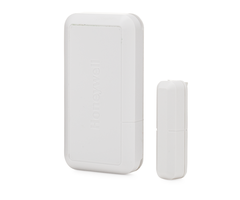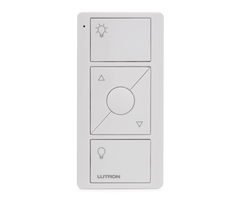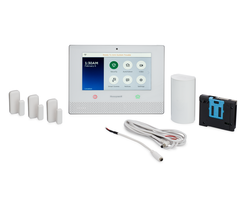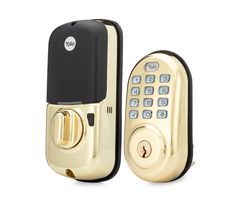Alarm Grid Video Recap: August 26th - 30th
Posted By Michael GorisHi DIYers! It's time for another video recap. Our video team managed to put up five (5) new videos this time. We're sure they will help many people get the most out of their alarm systems. Hopefully you enjoy watching them as much as we enjoyed making them. Let's check out the newest videos!
Using a DSC PowerG Keypad With the Qolsys IQ Panel 2 Plus
Joe explains how you can use a DSC PowerG Wireless Keypad with a Qolsys IQ Panel 2 Plus System. The IQ2+ works with a PowerG Keypad because it accepts the necessary 915 MHz frequency. The compatible PowerG Keypad is a push-button device that makes for a good secondary keypad for an IQ Panel 2 Plus. The keypad can be used in a second location in the building, such as by a back door. If you want a touchscreen keypad for the IQ2+, then the IQ Remote is a great option.
Using the 5800COMBO With the Lyric Alarm System
Jorge teaches users how they can use a Honeywell 5800COMBO with a Honeywell Lyric Alarm System. The 5800COMBO offers smoke, heat, freeze and carbon monoxide detection all in one convenient device. The sensor can use up to five (5) zones on the Lyric System. Each zone will have a different Loop Number according to function. These functions include smoke & heat detection, freeze detection, CO detection, RF supervision, and end of product life. If there is a function you do not want to use with the sensor, then you can skip programming for that zone.
Getting Remote Access to a Qolsys IQ Panel 2 Plus
Jorge tells users how they can get remote access to a Qolsys IQ Panel 2 Plus Alarm System. This is done by getting the system monitored with service that includes access to Alarm.com. This is an interactive monitoring and automation platform that allows you to control your system remotely. By accessing Alarm.com through the mobile app on an Android or iOS device, you can arm and disarm the system, check its current status, control programmed Z-Wave devices, view the live feed for Alarm.com Cameras, and more.
5800C2W Support With the Lyric Alarm System
Jarrett explains how you can use a Honeywell 5800C2W with a Lyric System. This is a wired to wireless converter that lets you use hardwired sensors with the system. This is great if you are upgrading to the Lyric from a hardwired system. You can save a lot of money by not having to buy completely new sensors when your existing ones work just fine. You will typically want to have the 5800C2W in the same location as the old hardwired panel. This will make wiring as easy as possible. Mark the wires before switching them over!
Jorge covers the basics for door contacts. These sensors let the system know when a door is opened. Most work in the exact same manner. There is a sensor, along with a smaller accompanying magnet. The sensor is placed of the door frame, while the magnet is placed on the moving part of the door. The sensor and magnet should be as close as possible when the door is closed. Alignment is also important. Opening the door will cause the magnet to separate from the sensor. This will let the sensor know to alert the system.













